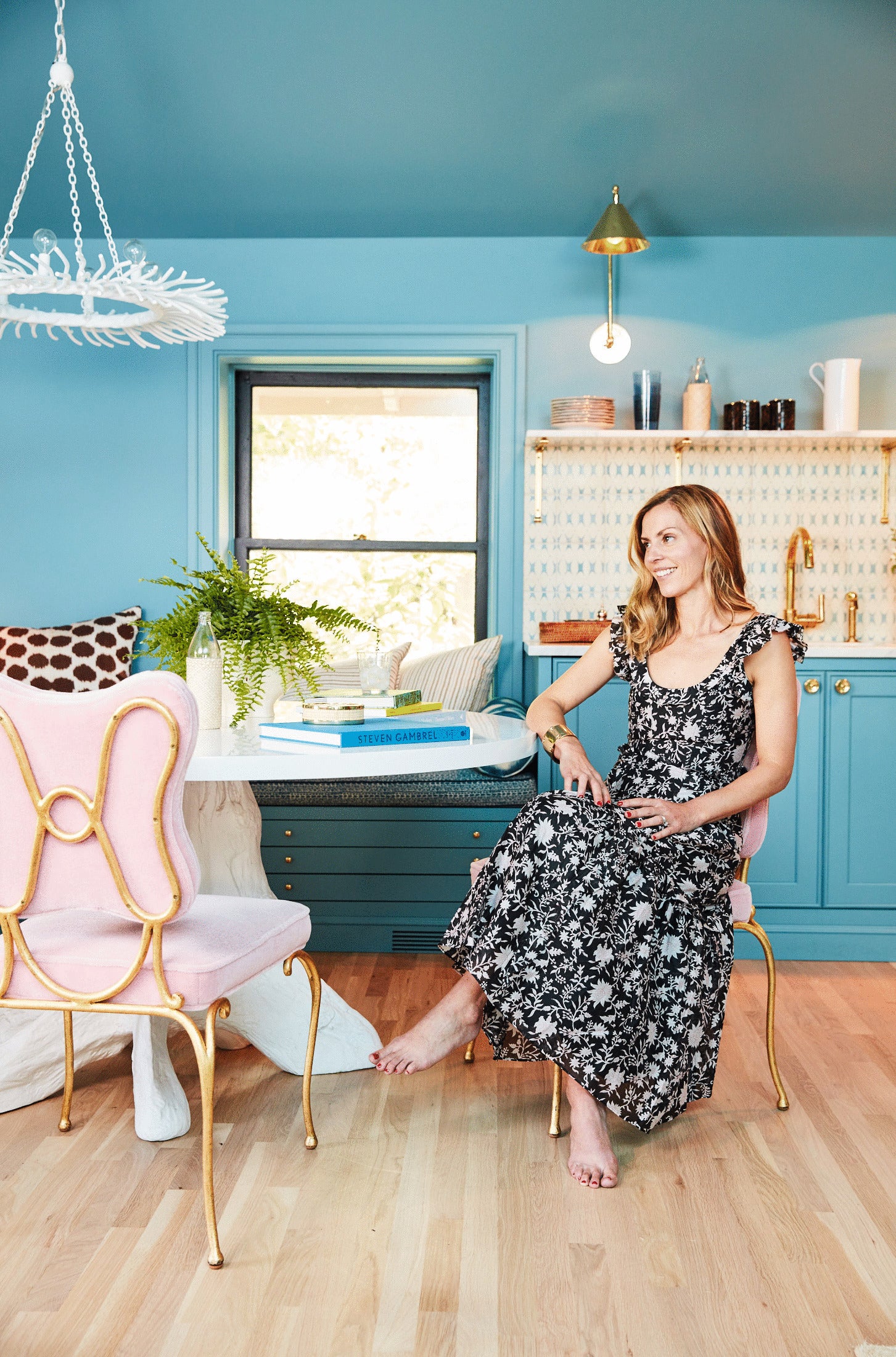The 50 States Project is a yearlong series of candid conversations with interior designers across the country about how they’ve built their businesses. This week, St. Louis–based Amie Corley tells us why she stopped doing one-room projects, how she engages clients’ imagination in the design process, and why she always maintains a little mystery in her design plan.
What are your earliest memories of being drawn to design?
I was a complete hippie and had zero clue that interior design existed—I grew up in a teeny-tiny Cajun town in Louisiana, and it was just not a thing, you know? I was also dead-set on becoming a doctor from day one. I was pre-med all through college, and I even studied abroad in the rainforest in Costa Rica because I thought I was going to go work for the [Bill & Melinda] Gates Foundation and find a cure for malaria. And then when I graduated, I could not get into medical school, so I went to Tulane for their master’s program in public health and tropical medicine. Again, the idea was to go work in Africa and save the world—something very idealistic. I ended up meeting my husband there—he was in medical school at Tulane at the time—and he was like, “I’m sorry, Amie, but we’re not going to go live in Africa. You might need to come up with another career plan.”
I’ve always dabbled in creative stuff, and I was taking tons of photography classes in New Orleans. I knew I loved art, but I had always imagined myself in some kind of scientific career. And then we got married the Saturday after September 11, 2001. It was a very tumultuous wedding, and then we moved to Chicago for my husband to do his residency, and I had no idea what I was going to do. What the heck do you do with a master’s in tropical medicine? I ended up working for Barneys in the Vera Wang department selling high-end wedding gowns for three years while I was still just floundering.
At that point, did you still want to be a doctor, or had you sort of put that on the shelf?
I had put that on the shelf, but I didn’t know what to do instead. After my husband’s three years of residency, we moved to St. Louis to be near his family and bought a 1907 fixer-upper. And when I say fixer-upper, I mean it was really a fixer-upper.
I love that you qualified that.
We live in this very historic part of town. The early 1900s were this heyday for St. Louis. The World’s Fair was here in 1904, and this whole area where we live is around Forest Park, which is second only to Central Park as the largest city park in the country. It’s amazing and beautiful, with a huge art museum and all these remnants from the fair. And all of our houses on Lindell Boulevard along the park were built around that time and are very iconic—people drive past the houses and take pictures. But inside, most of them have gone into such disrepair over the past century. So we bought one of those—sight unseen, believe it or not—and we thought we were gonna fix it up ourselves.
Sight unseen?
Well, [my husband] Rob’s parents came and took pictures. I still have like 100 actual photos [in an envelope with the film] somewhere. They also live in an old house, and they were like, “We love it. You should buy it.” So we bought it, moved in and were just completely overwhelmed. I mean, I still had no clue interior design was even a field. But I started reading every shelter magazine. Domino magazine had just launched, and it was like my bible. I became so obsessed with it. But I never thought I would do this as a career—I just started doing my own home, and then friends started asking, “Can you come help me?” And I was like, “Well, let me go to the local showrooms and see what’s here.”
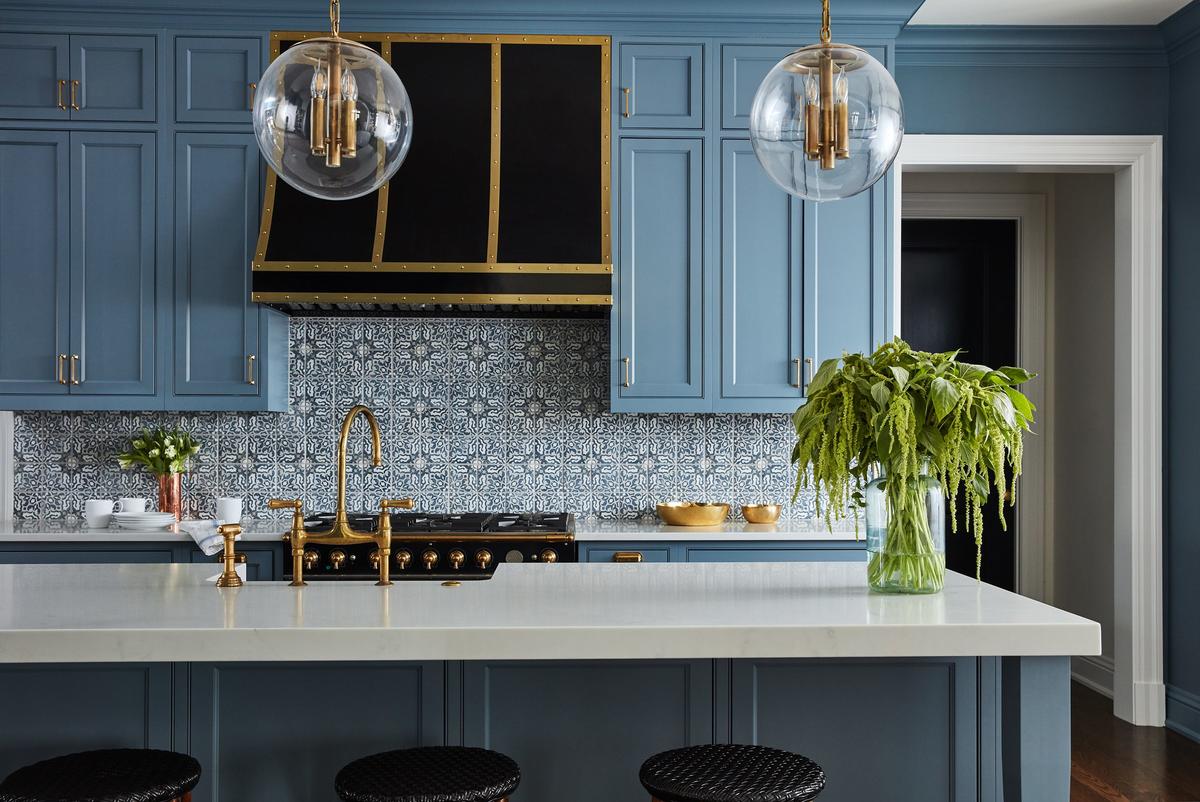
Shopping at showrooms—was that the turning point for you?
St. Louis is not a design-driven city at all—it’s rooted in traditionalism, and everyone’s houses look the same. I still struggle today to really push people to get out of that mold, like where you want your house to look like your mom’s house.
I would go to these local showrooms and see these designers showing their young clients the most traditional “hunt club’’ scenes and gold and burgundy plaid. There were no young designers, just people who’d been around forever doing very traditional interiors. So after a bunch of friends asked me to help them, my husband was just like, “Why don’t you get a tax ID so you can go buy stuff for them?” That was 2008. I had just had my first kid, and I did not want to be a stay-at-home mom, but I did not know what to do. It’s just so serendipitous, I guess.
How did you transition from decorating for your friends to launching a firm?
I ended up meeting the editor of a local home magazine who came and took pictures of my house and put me on the cover in 2009. The client inquiries started rolling in, and I just went with it. I faked it ’til I made it.
How has the business grown since then?
I feel like my background in science makes me extremely organized, which helps with the business side. Our clients love that we have a more structured approach. I worked by myself until 2011, when I had my daughter and realized I needed technical help. There’s only so much you can do as a decorator when you’re getting inquiries for renovations and larger-scale projects, and I knew I couldn’t do that part on my own. So in 2011, I hired my first employee—a design assistant—and it was freedom. It made me realize how much you can offload what you don’t like to someone else.
Since then, I’ve always had either two or three employees—never more, because we work out of the carriage house behind my house. I never dreamed of scaling this into something really big. Instead, we love digging in: fewer clients, deeper relationships, and better, highly detailed projects. We rethink the wheel for each client, which some people hate to do, but I try to never repeat, and to make sure that what I’m doing for this project right now is not coming from the same place as the project I did last year.
What does that mean in practice? How do you push yourself to reinvent the wheel for every single project?
I spend a lot of time with my clients upfront to try to find out what they like, so that I’m not just pulling from what I like. A lot of my clients don’t read magazines, they’re not into the design scene, and it’s not something that they find important, but I love to hear their perspective anyway.
We start each project with a very hefty Pinterest board. I like to dive deep into my old design books and lay them all out over the studio table and peel back the layers of a different way to do stuff. For kitchens, I love to look at European kitchens and that pared-down approach—slab doors and great tile backsplash. You can pick apart these older designs and designs from other parts of the world and kind of translate them into something that people in St. Louis would like.
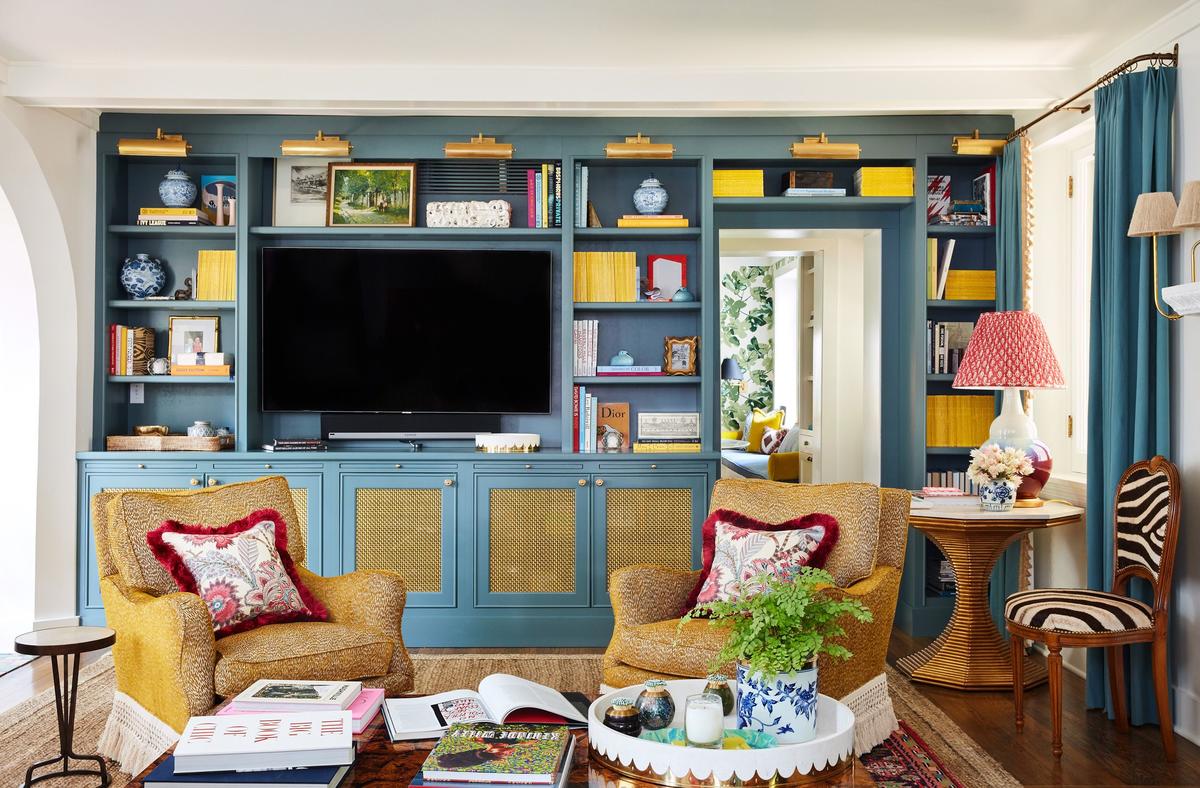
Your first hire was a design assistant, but now you’ve grown to have two or three employees. What do those people do for you?
My business has two arms. One is a renovating and new-build arm, which is very technical. We do all of the interior architecture drawings alongside an architect; we are heavily into CAD and detailed wall elevations for everything from crown and trim to fireplace and tile—we do it all. My senior designer has been with me for four years, and she does all of those drawings. She works with me on these new builds and renovations from start to finish. But halfway through, I’ll kind of peel off and let her do all the site management and make sure all the execution of details is in order for those.
Then I’ll start with my other designer, who does the decorating arm of my business. For these new builds, we are furnishing them, as well. So she’s my project manager for the decorating side and does all of our installations with me once the project is finished. I’m also hiring a part-time office manager next week. Olivia, on the decorating side, has been doing all of that for me, as well. But when you’re buying so much stuff and keeping track of it all, I feel like it needs to be offloaded to someone else.
How hands-on are you on each side?
In truth, I don’t really give away any of it. We work on three to five projects at a time. I’m at every meeting, and I redline every drawing—there’s nothing that leaves this office without me getting eyes on it. I mean, you cannot make a mistake in this industry.
Totally—and if you do, they’re often expensive mistakes.
I drill this into my employees’ heads all the time: A mistake is many thousands of dollars. This is not a little thing.
How do you communicate that to your team and make them feel responsible for those decisions?
We’ve had to learn the hard way. Mistakes can either come in the form of something being drawn in the wrong place on an elevation—or, in one instance, one of my designers forgot to put cans in a bathroom and all the electrical was done. We had to pay for the recessed lighting to be put in—not a huge deal, but it was a miss on her part. I’ve had designers who didn’t check the dimensions of the sofa going into a doorway that shrunk during construction. At the beginning, it all fit, but the doorway shrunk over the course of a year and we didn’t catch it, and the sofa couldn’t fit. So we had to pay $1,200 to have it cut down.
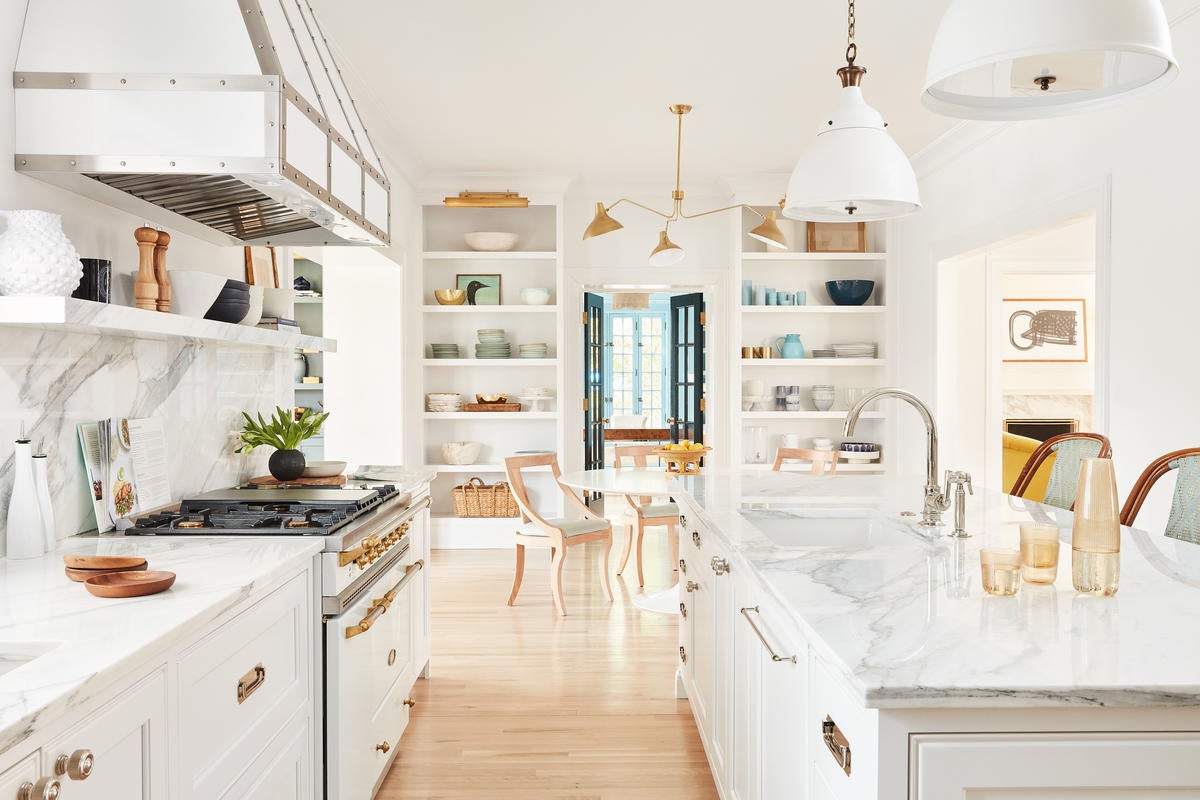
How did you land on three to five projects at a time?
There came a point when we were getting tons of inquiries; I could have hired eight people and scaled this and done the same house over and over, but I just didn’t want to. That’s not what I love. I love getting to know my clients. I love the nitty-gritty. I like doing the actual work. I love pulling fabrics, finding new vendors and going to [High Point] Market. I didn’t want to just farm it out to someone else—that was really important to me from the beginning.
How do clients find you?
It’s all word-of-mouth. I have advertised a little bit—we’ve been in The Scout Guide here in St. Louis for the past few years, but I don’t think that’s how people find me. I get a lot of people going into clients’ houses who find me that way, or parents from my kids’ school—I’ve been lucky to be able to keep it close and tight. I like to have some kind of connection to people other than just the fact that they’re hiring me. It’s a very personal industry. I always tell my clients that when they hire me, we’re going to get married for a couple of years. If they don’t like the sound of my voice, they should not hire me, because they are going to hear it all the time.
How do you decide what you say yes to?
That’s been a very hard thing for me to learn because I am a pleaser. At the beginning, I said yes to everything. And that is one of the hardest lessons I ever learned.
About five years ago, we were doing 20 to 30 projects at a time, and I was wearing myself into the ground. I realized that for the majority of them, we weren’t even making much money. It’s all those little projects that drag the large projects down. If you could actually spend the time focusing on just those large ones, you wouldn’t have a financial need for the small ones.
Then, right after I turned 40, I had this epiphany. I was like, “I’m either going to die doing this, or I need to change the way I’m doing this.” I was so stressed out. As a business owner, you just want to make everybody happy—but trying to keep that enthusiasm and momentum going for that many projects was not happening. I genuinely care so much about these projects. For me, success 100 percent is return clients [who become] a client forever. We don’t really take on any new clients now—they’re all repeat clients who are redoing or moving—and I don’t do one-room projects anymore. It’s not profitable, it’s not fun for us, and it takes us away from the larger projects that need our attention.
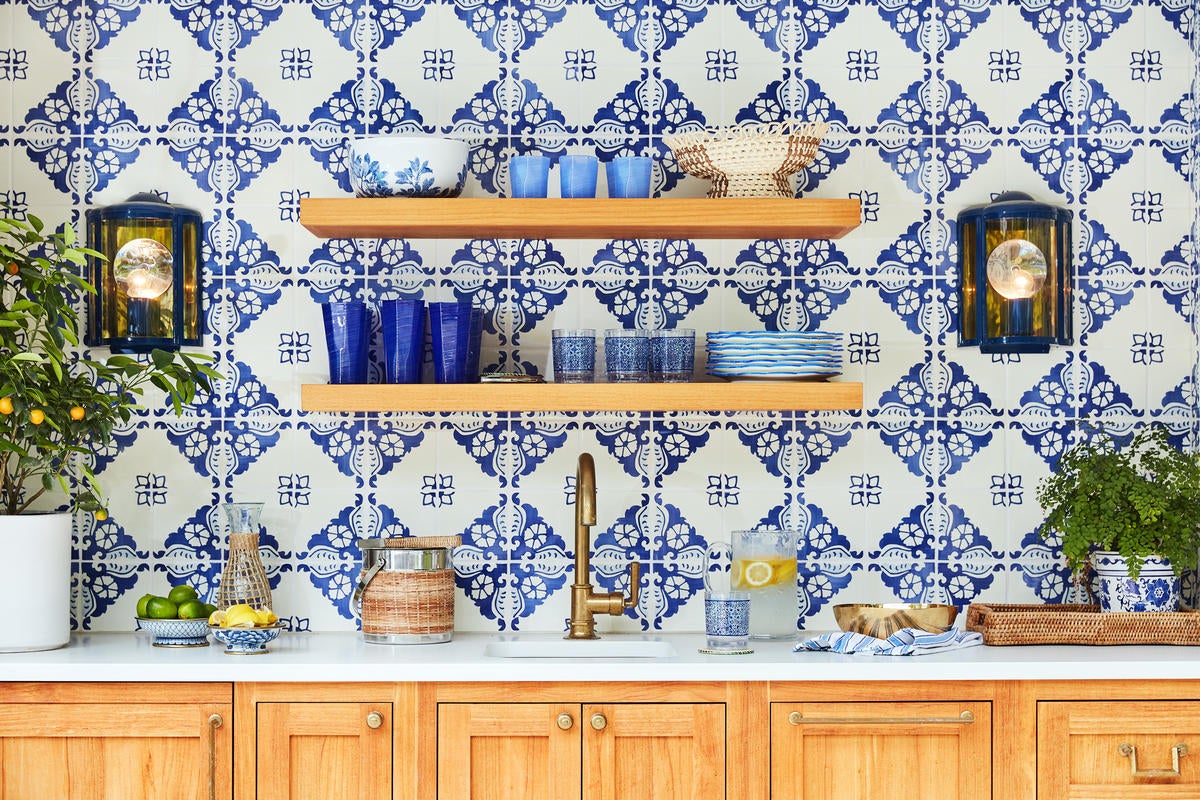
How did you approach pricing? And has that changed over time?
I’ve always had the same general approach: We bill hourly, and then we mark up the products we sell. I undervalued myself forever, being that I don’t have a design degree and always feel like people are not going to pay that [price]. There aren’t a lot of other designers here, so I’ve never really had a ton of competition—I never felt people were bidding me against someone else. But I still felt like, “Oh, people aren’t going to pay that.” I would hear what other designers in New York and Texas would charge and I was like, “Oh, my God, my clients will never pay this. This is St. Louis.”
How much of that was true, and how much of that was you telling yourself that?
It was me telling myself that, 100 percent. I think it’s very easy to talk yourself out of those things. I was so scared to lose a great project because someone wouldn’t want to pay me—I didn’t want to lose that potentially greatest project of my life because my hourly was too high. When I first started in 2008—I’m almost embarrassed to say it, but I charged $50 an hour. Even now, I’m only $150, but that is really standard for St. Louis. I feel like we’re at a spot where we would be competitive with anybody else who they’re interviewing, and I think our portfolio’s better. There should be no competition.
Have you ever experienced pushback on markup? Or how do you talk about what that markup means?
We have different accounts with different vendors, so some vendors will only give us a teeny-tiny discount. Then we have others who we have a true wholesale account with, as though we’re a retail store. In St. Louis, we have no high-end furniture stores, so I am the number-one retailer of their vendors in our area. We’re getting rock-bottom prices on those things. Forever, we would just mark up for the stuff that we got 10 percent off—we would mark it up 10 percent percent because that’s all that we felt like we could. Now, we just do a flat 30 percent markup on FF&E across the board. It allows us to be very transparent. We can essentially show all of our invoices from our vendors to our clients. I think when you’re doing really large-scale projects, that becomes a big piece of the puzzle. As far as the client trusting you, they don’t understand that some people are going to give us 10 percent off and some people are gonna give us 70 percent off. They don’t really care. For them, it’s just knowing where their money’s going, and how much things truly cost. That makes it easier for us.
I like to be very transparent, very upfront: “Yes, we are making money on this. There is a lot of liability and a ton of work.” It takes so much time to order custom upholstery these days, we have to make money on this stuff. I think it’s important to be very clear that you’re paying hourly for all this work we’re doing behind the scenes, and then this markup is essentially what you would be paying to a retail store for someone who did not help you, is not going to help you install, and does not care if it looks good or if it fits through your door. We’re doing all that, so yes, we deserve to make money on it. It’s tricky to talk about with people, but I’d much rather talk to people about it when things are new and fresh and get it all out.
Did changing your rate change the way you approached the work?
I never started this business because I’m motivated by money. What motivates me is to be able to be creative and do all these great projects—but you have to get that payback in order to have the momentum. Even though it’s not what drives me, it is necessary for running a successful business, to be able to pay my employees really well, and to do all the things that I want to be able to do as a business owner.
As far as billing goes, that’s one of the things I’ve always tried to make very clear and upfront to clients. It’s hard when you’re doing hourly because an easy client can be significantly less at the end of a project than a difficult one. Before we start a project, I give people ranges of what to expect to pay monthly. I think one of the things in this industry is people being blindsided all the time with gigantic bills, and just understanding where the time is going and how much time things take. The more you can tell people upfront the better. Setting expectations is everything in this industry.
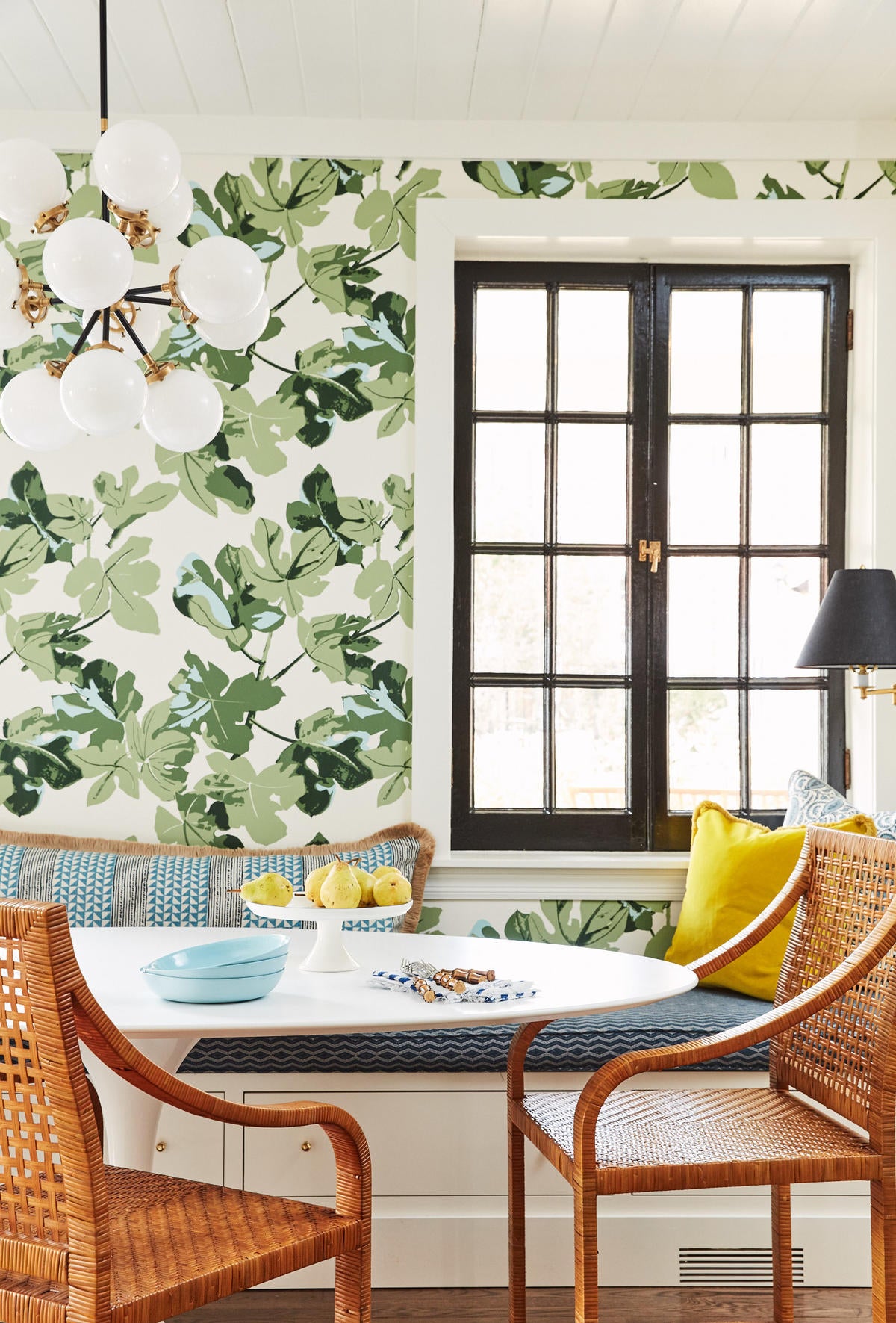
What kind of things do clients need to know upfront?
You assume people know things going in, but they don’t. We’ve been in business for 13 years, and I’ve seen so many things happen and questions people ask. I love to have my clients review things [we put in their house] that they love, things that they hate, things they would do again in another house, things they wouldn’t. I think that gives you information for the next time around.
Has any of that feedback changed the way you design in general?
Sure, absolutely. It doesn’t necessarily change what I’m going to show people, but it changes how I talk to people about it. We’ve been using a ton of Calacatta marble in kitchens. It’s gorgeous and people want that slab backsplash, but it is not for everybody. I can say that a million times going in, but I don’t have Calacatta marble in my kitchen, so it’s important for me to go back to those clients’ homes who do have it and find out, for example, if they’re super annoyed with it or if they would do it differently. I need to hear that to be able to tell my clients that review. The more experience you have—that is gold in this industry. It’s a wealth of knowledge that you can share with your clients, and I think you have a better project at the end of it.
You mentioned what the design community in St. Louis looked like when you started your business. How has it changed?
There are definitely a lot more young people doing design now. When we turn down a project, I always try to have someone to refer them to, so I have a good relationship with a couple of young up-and-coming designers in their late 20s who are great, and I think they’re going to have a wonderful business. They’re different from me. They’re very hungry, and they’ll work 80 hours a week. I’m done doing that. I’ve taken on my three projects a year and that’s it. So I’ve been sending them tons of business.
I do feel like there’s a little bit more of a community here than there was before, but there’s still not a lot, and it can feel like people don’t really value design here. All of these new boutique hotels have gone up in the past couple of years, but it just looks like they were done 10 years ago—there’s nothing interesting about them, nothing that seems forward-thinking. [San Francisco–based designer] Ken Fulk is just so inspiring to me—everything that he does, like the Goodtime Hotel in Miami that just opened up, that is inspiring and what a boutique hotel should look like. But St. Louis always has been a little behind. I had a client tell me, “I hear that brass is back.” And I’m like, “Where have you been?! Brass was back 15 years ago.”
How do you shop?
We go to High Point Market twice a year. My last big trip in 2020 was to Déco Off in Paris in January, right before everything shut down. Thank God I had that inspiration to carry me through [the pandemic]. I also love to travel, and I shop when I travel. I went to Thailand a few years ago and brought back tons of Thai breakfast trays and blue-and-white ceramics. I went to the Jim Thompson House museum in Bangkok and brought back a ton of things. We definitely have things custom-made for our clients, but for me, I love the hunt. I also read shelter magazines constantly, and I immediately go on Instagram and follow every new vendor that I don’t recognize, then set up an account and start communicating with them.
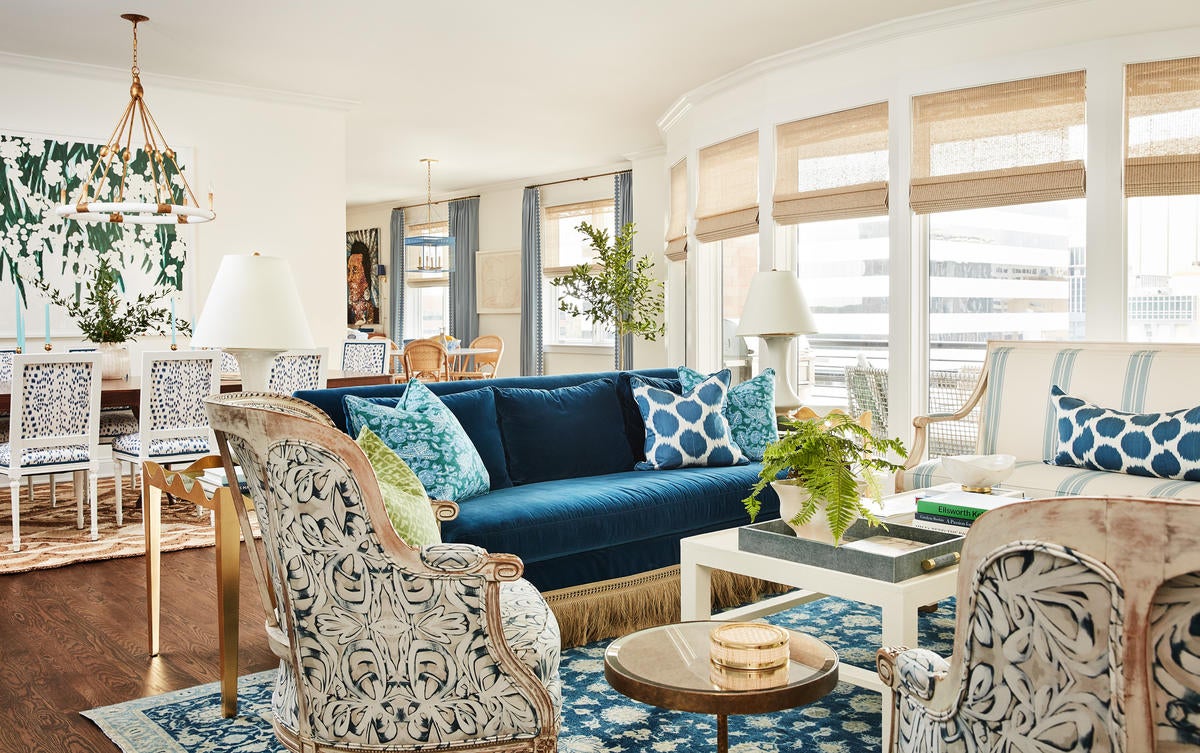
What does your presentation look like visually for clients?
It’s different depending on if we’re doing a renovation or new build versus decorating. I know a lot of people don’t use renderings, but we do. For the renovation side, we always start with the floor plan. From there we create a furniture plan, which then gives us our budget. Then we move into wall elevations. We start with cabinetry—I have a custom cabinet shop that makes all of our cabinetry from scratch—and then we layer in tiles, plumbing and electrical. So it’s very black-and-white at the beginning, which I feel is important because sometimes people get caught up in the color of something. It makes it more about the scale of things, and they can focus more on the basics rather than on the details. Even though I have the details in my head, I don’t show them right away.
What do you show them?
We still use Photoshop and we’ll elevate walls of art, and put the color of the sofa into the drawing so that they can kind of get a better sense of how all the things play together. We use InDesign, Photoshop and the Adobe Creative Suite to do our presentations. It’s nothing too fancy—we just print it on a 11-by-17 paper. I always tell people, “I need a little bit of your imagination to be a part of this. I don’t want to show you exactly what it’s going to look like.” I feel like if it’s too clear of what it’s going to look like for decorating, it muddies people’s perception of it, or they become too critical of things as they go in. I like for people to have to wonder a little bit; I like to leave some holes in our design. There are just some things that I feel are better left to decide on once you have the main pieces around you.
After installation, you mean?
Sometimes—it depends on the client. We have some clients who don’t want to see one thing: They say, “You just pick it all out, and I’m just gonna write you a check.” I love that. That’s a dream. It gives us a lot of freedom, and I don’t have to worry about presenting. Then I have the other side, which can be a little too involved. For those people, I make them step back because I feel like the choices they want to push me to are not what I want them to do. I want to wait until the end and say, “See, I told you so. This is the pillow you need.” That’s the thing about taking on fewer projects. We have time to work through all these details with our clients and not feel like we’re racing against the clock so much all the time.
What else do you want to achieve? When you look ahead for your business, what comes next for you?
I didn’t expect any of this, so I’m thrilled with where we are. We’re actually working on our largest project to date. It’s going to be a four-year project. It’s a huge, ground-up new build here in St. Louis, and it’s so exciting. It’s gonna push us as a team to be even more organized, and get some new systems in place for purchasing and stuff that we’ve been meaning to do forever. Does it sound so complacent to just be like, “I’m so happy where we are”?
No. That’s an amazing place to be. Looking back, what is the biggest thing that you wish you had known from the start?
To say no. Honestly, that is the biggest thing that I have learned. I do think it’s valuable to know your limits, and you only know your limits if you go past them. I would never have known how hard I could push myself and what it would do to me if I’d never taken on 20 to 30 projects and seen what that would do. Also, I think about intuition. If a project doesn’t seem right, if the person doesn’t seem right, say no. It’s too personal and intimate of a relationship, at the end of the day. I’ve had two bad projects [where] I’ve had to fire people, and I don’t want to anymore. I feel like at this point for me, it’s very hard to say no to a project, but it’s way easier to turn it down on day one than halfway through.
Totally. Did you change your contract or the way you work as a result of those bad projects?
Absolutely. Oh, my God, my contract is night and day from when I first started. I didn’t do a good job of protecting myself because I just thought, “Oh, no one’s gonna do that.” One client took all of our designs and custom furniture I designed and brought it all to her friend who owned a shop and had her buy it from me. But I didn’t say in my contract that everything we source you have to purchase from us. I wasn’t clear. It seems basic, but clearly it was not. I started this business hating contracts and feeling like it was going to scare people away and that no one was going to sign it. For such a personal industry, it feels so stiff and corporate, but you have to assume that everything that can happen will happen to you. And it will. You can’t prevent everything. It’s just about how you deal with it and how you learn from it.
To learn more about Amie Corley, visit her website or find her on Instagram.
















